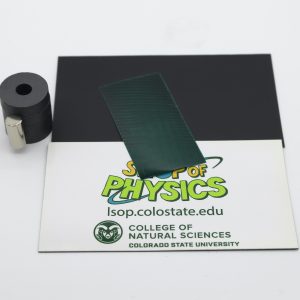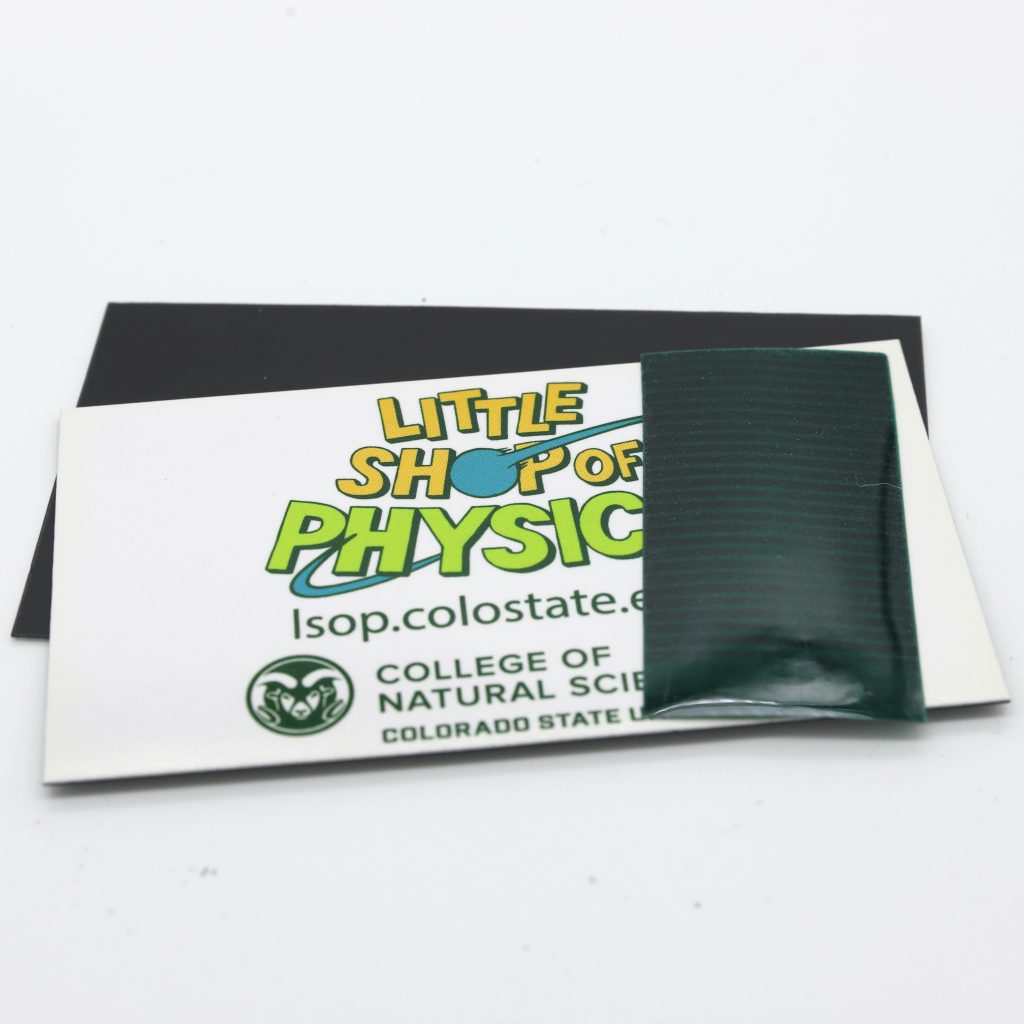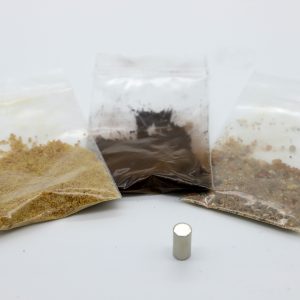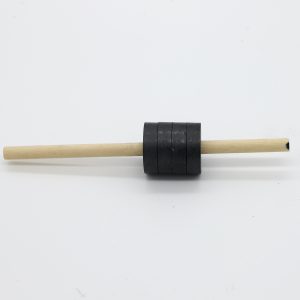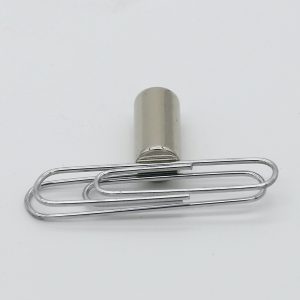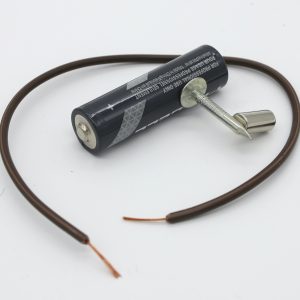Magnetism Kits
These hands-on activity kits are designed with one thing in mind: exploration. What makes refrigerator magnets different from ceramic magnets? Where can you find iron metal around your house?
Please scroll down to view the different activities, or you can click here to download them as a pdf.
Activity: Magnetic Sleuth
Please click here to download a detailed pdf for this activity.
What to do:
Place the green paper on each side of the refrigerator magnets, observe. Place the paper on top of another magnet or anything else you want to inspect.
What is happening:
This paper contains iron filings which are magnetic. When placed near a magnetic pole, the filings stand up and create a dark spot. You can use this to see if anything is magnetic and what its arrangement of poles looks like.
Activity: Refrigerator Magnets
Please click here to download a detailed pdf for this activity.
What to do:
Hold the magnets together; first try the white sides touching each other and then the black sides touching each other. What do you notice? Now try dragging the black sides together. Try both horizontally and vertically.
What is happening:
The white sides are not magnetic so they don’t stick together. The black sides are, so they stick together and you can feel a bit of resistance when you pull them apart. The refrigerator magnets have many lines of magnetic poles alternating North and South. This causes a strong magnetic force close to the magnet (so it can stick to your refrigerator!) and also why you feel a ‘buzzing’ when you drag the magnets across one another as they alternating attracting and repelling.
Activity: Magnetic Surprises
Please click here to download a detailed pdf for this activity.
What to do:
Hold the included filled baggie flat in one hand and use the other to drag the strong neodymium magnet along the baggie. Observe: does anything stick to the magnet? Is there anything surprising happening?
What is happening:
The baggies contain iron filings which are magnetic, cereal which contains iron for nutrition, and sand which contains magnetic metals too!
Activity: Levitating Magnets
Please click here to download a detailed pdf for this activity.
What to do:
Place the ring magnets on the dowel so they repel each other; to make this easier, hold the dowel from the bottom and drop the rings from the top. Try pushing the top magnet down and see what happens. Explore this!
What is happening:
Magnets have North and South poles: like poles repel and opposite poles attract each other. That is to say North poles stick to South poles repel other north poles. The force of repulsion can be strong enough to overcome the force of gravity and cause the magnets to levitate!
Activity: Making and Breaking Magnets
Please click here to download a detailed pdf for this activity.
What to do:
Take the neodymium magnet out of it’s wrapping, there should be 2 paper clips with it. Try and use one paper clip to pick up the other. Notice if they attract one another. Now tap the magnet against the end of one of the paper clips about 10 times. Try to use it to pick up the other paper clips again. Drop the paper clip and try to pick up the other one again, what do you notice?
What is happening:
The paper clips are made up of tiny particles that can be magnetic, when you tap the magnet against the paper clip all the particles align in North-South arrangement and the paper clip is magnetic. When you drop it the particles are scrambled again and it is no longer magnetic.
Activity: The World’s Simplest Motor
Please click here to download a detailed pdf for this activity.
What to do:
Place the neodymium magnet on the flat end of the nail, then stick the sharp end of the nail to either end of the battery. Hold the wire and use a finger to hold one end of the wire to the end of the battery opposite the nail, now use the other hand to hold the free end of the wire near the flat head of the nail. Observe!
Tips: If nothing happens try fanning out the free end of the wire and holding it in different positions. Make sure the nail is hanging down so it can move freely. If it is stuck on the edge or lip of the battery move it back to the center
Fun extra activity, what happens when you hold the battery the other way (switching negative and positive)?
NOTE: Be careful! The nail and surrounding areas heat up quickly.
What is happening:
In order for electricity to flow there needs to be a complete circuit or circle of electricity. You complete the circuit when you hold the wire to the positive and negative ends of the battery. The current from the battery flows through the wire and the interaction with the field from the magnet creates a force which causes the magnet to spin! The electric energy is converted to rotational kinetic energy in the nail and finally becomes thermal energy.

